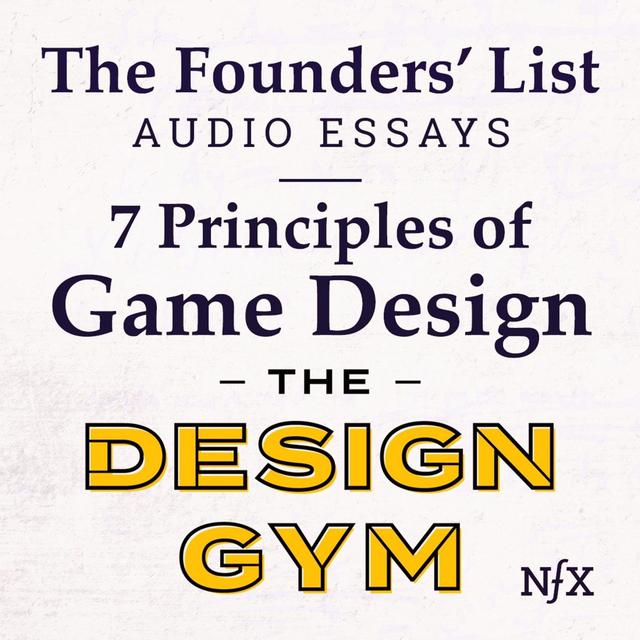You're listening to the founders Flint. Audible versions of essays from technology's most important leaders selected by the founder community. This is 7 principles of game design. Written by the Design Gym, an NYC based agency that has worked with top companies like Instagram, Netflix, Etsy, and many more. Red by NFX. The gaming industry is larger than Hollywood by many measures.
People spend tremendous amounts of time and money on James, and even paid to watch other people play James, and I'm not just talking baseball. The competitive video game market is huge and baffling. But gamification is everywhere too. In education, in corporate culture, in the innovation industry. Why? One of our favorite books, finite and infinite James, talks about how games appear in time and space and make a goal and a winner clear at the end based on rules.
When compared with most parts of our lives, that seems like a pretty good bargain. At our jobs, when does the change stop? How do we know if something worked or didn't if the game never ends? Life is by some measures an infinite game where the rules constantly change and winners turn into losers and vice versa. It's exhausting. Game design principles to fuel innovation. Play, reward, fidelity, constraints, and more.
Setting up games with clear goals and constraints help focus our energies and efforts and can improve and clarify outcomes and motivate us to move forward to the next clearly defined challenge and reward cycle. We use games all the time in our facilitation Work, drawing on books like Gamestorming, and the systems thinking playbook, to get teams thinking differently and to increase creative output. 7 design game principles. 1, fidelity.
Will the team be solving a challenge that is not like the current problem? That is, will the game be just for clarity and learning? Or will the team be solving a challenge like current challenges but stripped down and simplified. There's no hard rule on this. Your mileage may vary. Our feeling is that an abstract or general challenge is best to loosen a team's thinking up first, then to approach the challenge sideways, not directly.
The always never game is a great way to come at the principles to guide solution to a challenge in a safe and fun way. 2, objectives. There needs to be some kind of goal or outcome that people can work towards. The more concrete and defined these are, the easier it is for people to participate. However, fuzzy objectives can be more rewarding since they model real situations Beller, Consider more ambiguous objectives for teams that are already Beller and accept the ideas for design games.
3, constraints, There needs to be some limits on what players can or can't do when achieving those objectives. Constraints should be relevant related to each other and present a coherent whole. 4, success criteria. There needs to be some way of knowing when the objectives are met. Clear success criteria helps establish expectations and buy in for game participation. Some games are more unstructured with less well defined criteria.
Classic role playing games like Dungeons And Dragons don't have a clear overall objective. That ambiguity can make such games better able to model some scenarios, but harder to sell inside an organization because they don't have a set ending. 5, reward. Incentives that reward success can be intrinsic outcomes of the game, good results, recognition, embedded in the game itself, getting more monopoly money, or external recognition or prizes, the winner gets dinner at a nice restaurant.
Balancing rewards between players can be a challenge and needs to be considered when adopting games. 6, play. The most important reward needs to be a sense of fun, encouraging interaction, and intrinsic value for the game. That sense of play can be elusive. Play testing a design game in your own team is important to get a sense of what is fun and what isn't before you roll it out with a larger group.
Play operates in the area of flow, balance the challenges of the game with the abilities of the player. 7, competition, sometimes. Sometimes, but not always. Design games can involve individuals or teams competing to achieve those game objectives. While competition can be an easy game mechanic to introduce, It can also create the wrong dynamic depending on organizational culture and individual participants.
Does competition make things fun or turn people into raiding lunatic spent on winning at all costs? If it's the latter, you might look for more cooperative alternatives, including setting competition against previous performances, like beating your old record for ideas generated. Instead of against other teams or individuals. Thank you for listening.
For more of these audio essays from the people who built companies like Instacart, Facebook, Trello, HubSpot, and Dropbox, visit foundersless.nffects.com. And subscribe to the NFX podcast, now streaming on all platforms.
